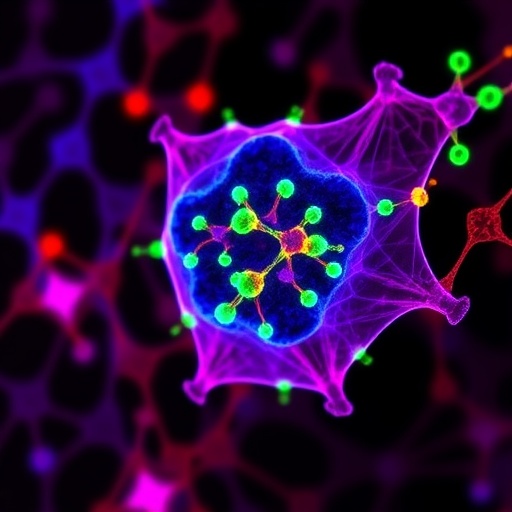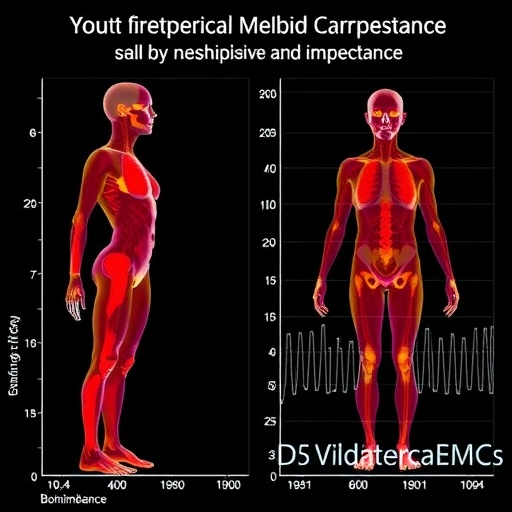In a groundbreaking study led by the Molecular Oncology Research Center (CPOM) at Hospital de Amor in Barretos, São Paulo, Brazil, researchers have unveiled novel insights into pediatric germ cell tumors (GCTs) that hold the promise of revolutionizing personalized cancer therapies for children. Despite representing a mere 3% of childhood cancer cases, pediatric GCTs pose significant challenges to clinicians due to their complex biological heterogeneity and the severe long-term side effects associated with conventional treatments. This study delves deep into the immunological landscape of these tumors, identifying distinctive immune profiles that could serve as critical biomarkers and therapeutic targets.
The traditional management paradigm for pediatric germ cell tumors combines surgical resection with chemotherapy, a regimen that, while broadly effective, does not uniformly benefit all tumor subtypes. Moreover, chemotherapy-induced toxicity often results in debilitating side effects, underscoring the urgent need for more nuanced treatment strategies. Addressing this gap, researchers at Hospital de Amor embarked on an ambitious project to characterize the “immune environment” of pediatric GCTs. This approach focuses on decoding how immune cells within the tumor microenvironment interact with malignant cells, potentially influencing tumor behavior and response to treatment.
Mariana Tomazini, a leading researcher and study advisor at CPOM, contextualizes the rarity and complexity of these tumors. Pediatric GCTs manifest in multiple anatomical sites—including gonadal and extragonadal locations such as the ovaries, testicles, central nervous system, and retroperitoneum—and exhibit several histological subtypes. These histologies represent distinct cellular landscapes and growth paradigms, essentially serving as a “biological signature” that can inform clinical decision-making. Tomazini highlights that understanding these signatures is paramount in crafting personalized treatment protocols.
The study, financially supported by the São Paulo Research Foundation (FAPESP) under grants 19/07502-8 and 23/07073-5, was executed as part of the master’s research project led by Lenilson Silva. The team meticulously analyzed tissue samples sourced from 17 pediatric patients diagnosed with germ cell tumors between 2000 and 2021, encompassing ovarian, testicular, and central nervous system specimens. In parallel, normal non-tumorous tissues were used as controls to establish baseline immune parameters. Their findings were recently published in the esteemed journal Frontiers in Immunology, marking a significant contribution to the field of pediatric oncology.
Employing advanced molecular profiling techniques, the researchers assessed the expression of approximately 800 genes associated with immune system function. This high-resolution analysis enabled them to map the diversity and density of immune cell infiltrates, including key subsets such as T lymphocytes, within tumor microenvironments. To draw meaningful comparisons, gene expression patterns from pediatric tumors were juxtaposed with publicly available genomic data from adult germ cell tumors, revealing age-specific immunological landscapes that had previously gone unexplored.
One of the pivotal discoveries of the research lies in the demonstration that each histological subtype of pediatric GCT possesses a discrete and unique immune profile. This finding is instrumental in decoding the mechanisms behind varying clinical behaviors and therapeutic responses observed in these tumors. For instance, dysgerminomas—primarily ovarian tumors—were found to harbor an immunologically “active” milieu characterized by a robust infiltration of cytotoxic CD8+ T cells. These immune effector cells are known for their capacity to identify and destroy malignant cells, potentially accounting for the generally favorable prognosis associated with this subtype.
Intriguingly, dysgerminomas also exhibit elevated levels of immune checkpoint molecules such as CTLA-4, TIGIT, and IDO1. These proteins are critical regulators that can suppress immune activation, allowing tumors to evade immune surveillance. This characteristic suggests that dysgerminomas could be susceptible to immune checkpoint blockade therapies, a class of immunotherapeutics that has transformed treatment paradigms in adult malignancies like melanoma and non-small cell lung cancer. Hence, the study underscores the potential of repurposing such therapies for pediatric patients with this tumor subtype.
Conversely, a starkly different immunological landscape was observed in endodermal sinus tumors, also known as yolk sac tumors (YSTs). These tumors exhibited an immunosuppressive microenvironment marked by exhausted T lymphocytes, indicative of impaired antitumor immune responses. Moreover, the presence of immunoevasive molecules such as CD24 and PVR was markedly increased. CD24, in particular, is implicated in promoting immune evasion and chemotherapy resistance, correlating with the aggressive nature and poorer prognosis of YSTs. This nuanced understanding of immune dysfunction opens avenues for targeting these molecules to restore immune competency and therapeutic sensitivity.
Embryonic carcinomas also demonstrated elevated CD24 expression, reinforcing its role as a pivotal marker of tumor aggressiveness and immune escape. Given that prior studies have shown that blocking CD24 can resensitize tumors to chemotherapy, these findings suggest that CD24 inhibition might be a promising adjunct in treating these tumors. Such targeted immunomodulation could mitigate the toxicities associated with conventional treatments by refining therapeutic precision.
Interestingly, mixed germ cell tumors originating in the central nervous system revealed fewer significant immune alterations, a phenomenon that may reflect their cellular heterogeneity or the limitations posed by smaller sample sizes. This observation signals the need for expanded studies with more extensive cohorts to fully elucidate the immune characteristics of these rarer subtypes and ensure comprehensive therapeutic strategies.
The implications of these findings extend beyond academic interest; they herald a paradigm shift toward individualized medicine in pediatric oncology. Recognizing that each tumor subtype maintains a distinct immunological fingerprint validates the concept that uniform treatment regimens are suboptimal. Tailored therapeutic approaches, potentially incorporating immunotherapy modalities, could maximize efficacy while minimizing long-term sequelae. This is particularly critical in pediatric populations where treatment-related morbidities can severely impact quality of life decades after remission.
Despite the invaluable contributions of this study, the authors acknowledge its limitations, primarily the modest sample size inherent in rare pediatric cancers and the absence of representation for all histological variants. Nevertheless, as a pioneering effort, it lays a robust foundation for multicenter collaborations aiming to validate these biomarkers across larger populations. The ultimate goal is to transition from bench to bedside by integrating these immune profiles into clinical trials assessing targeted immunotherapies and improving pediatric treatment outcomes.
Mariana Tomazini emphasizes the overarching ambition of this work: to discover biomarkers that refine diagnostic accuracy and enable the selection of targeted, less toxic therapies. “Understanding the immunological distinctions between tumor subtypes brings us closer to achieving personalized medicine that can provide children with safer and more effective treatment options,” she asserts. The study not only advances scientific knowledge but also embodies hope for a future where pediatric germ cell tumors are tackled with unprecedented precision and compassion.
This research has earned prestigious recognition, securing the award for best paper at the recent Latin American Society of Pediatric Oncology (SLAOP) conference in Colombia. SLAOP’s mission to foster interdisciplinary advances in pediatric oncology and hematology aligns seamlessly with the goals of this study — driving scientific innovation to improve clinical care for young cancer patients globally.
As immuno-oncology continues to reshape cancer treatment in adults, this seminal research marks a critical inflection point for pediatric germ cell tumors. By harnessing the power of immune profiling, scientists are unraveling the complex interplay between cancer and the immune system, opening new frontiers for therapy development. The next chapters in this journey will be written through multicenter trials and clinical applications that translate these molecular insights into tangible benefits for children worldwide.
Subject of Research: Pediatric Germ Cell Tumors and Immune Profiling
Article Title: Immune profiling of pediatric germ cell tumors identifies key cell populations and novel therapeutic targets
News Publication Date: 20-Jun-2025
Web References:
DOI
Hospital de Amor – CPOM
FAPESP Research Grants | FAPESP Scholarship
References:
Silva L, Tomazini M, et al. Immune profiling of pediatric germ cell tumors identifies key cell populations and novel therapeutic targets. Frontiers in Immunology. 2025.
Tags: biomarkers for pediatric cancerchemotherapy side effects in childrenHospital de Amor cancer researchimmune profiles in germ cell tumorsimmunological landscape of tumorsmolecular oncology advancementsnovel treatment strategies for pediatric cancerpediatric germ cell tumors researchpediatric oncology challengespersonalized cancer therapies for childrentherapeutic targets in childhood cancertumor microenvironment in GCTs





